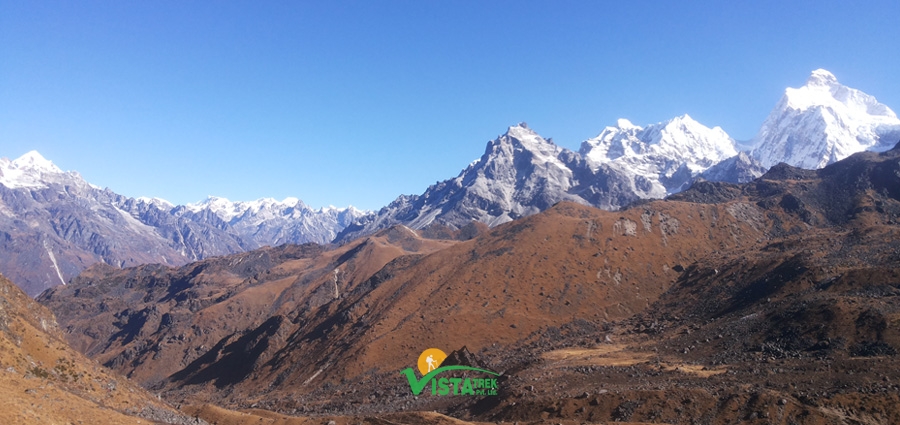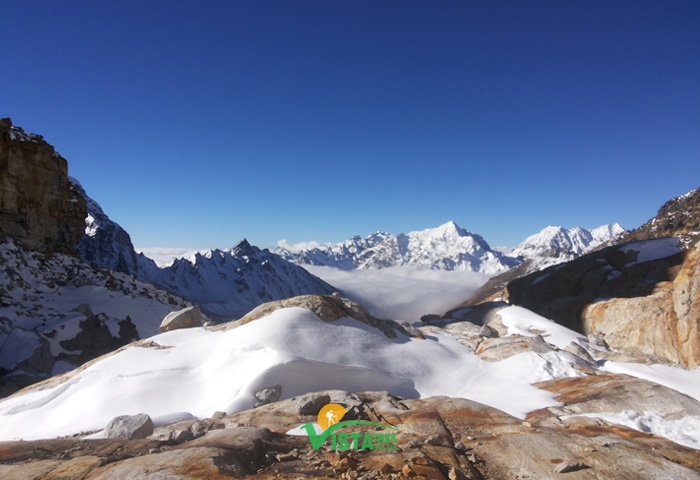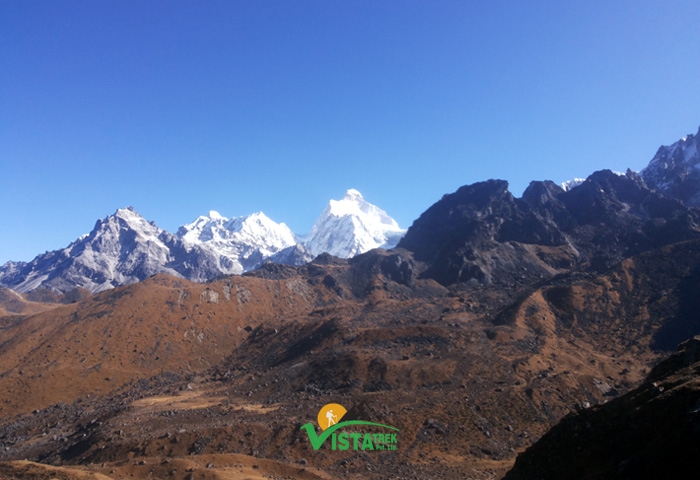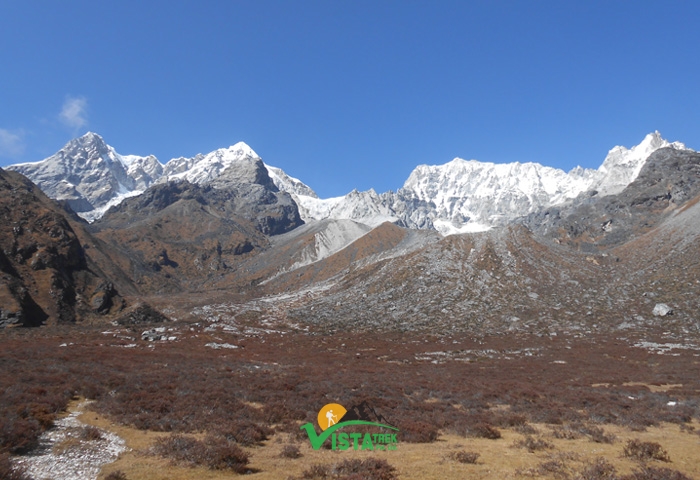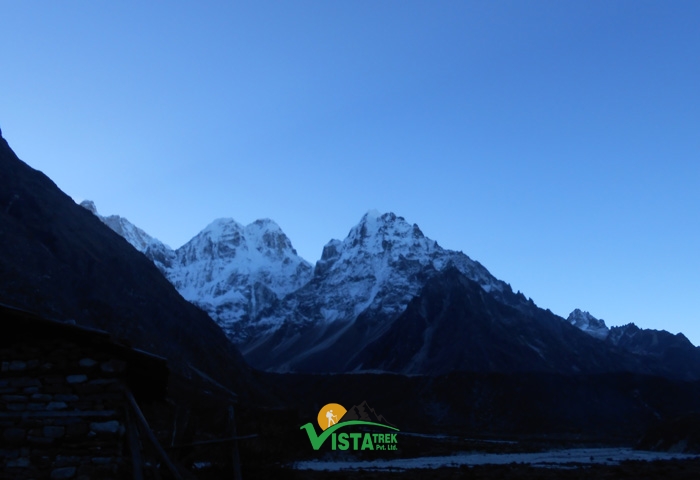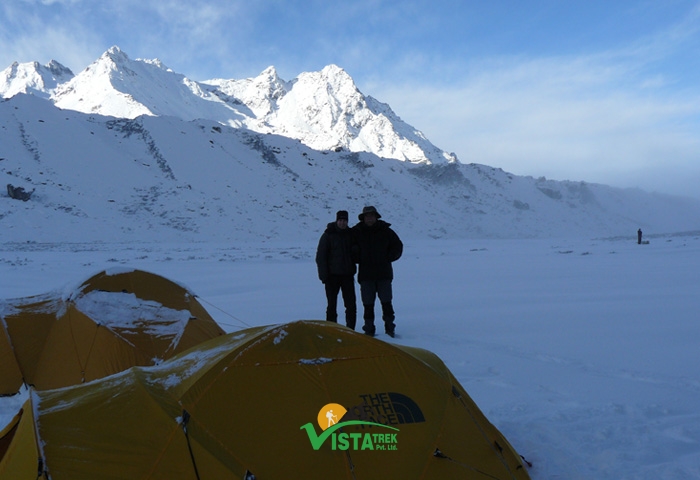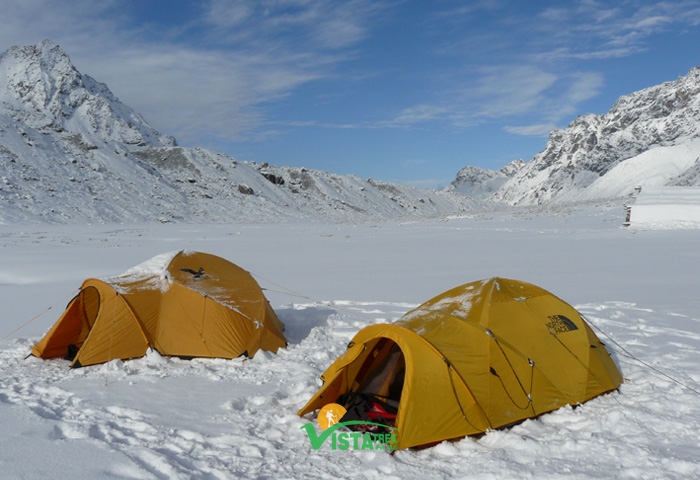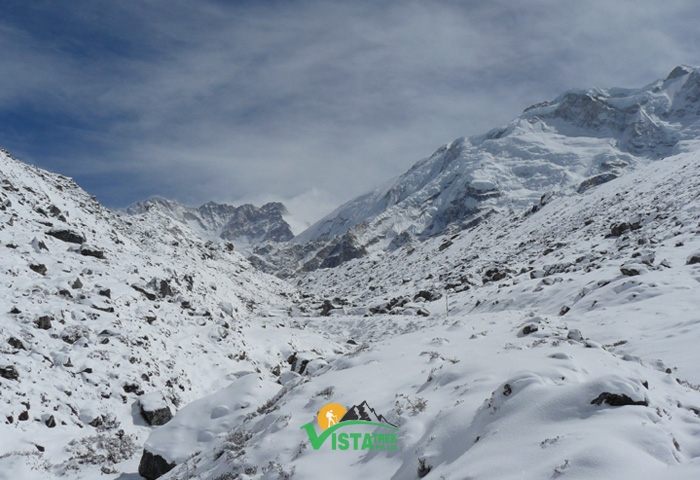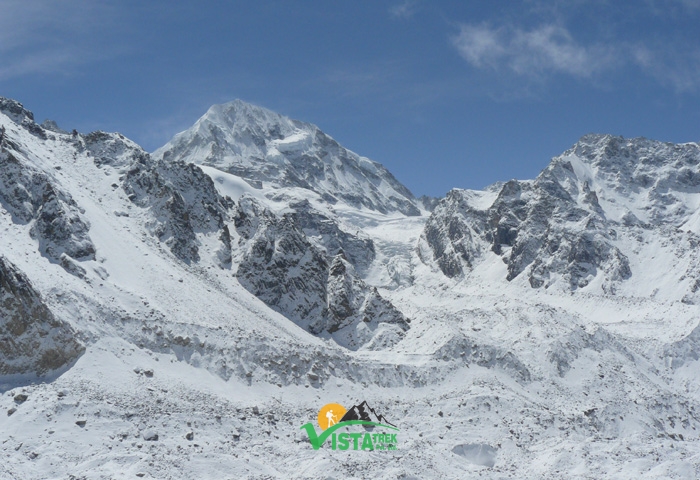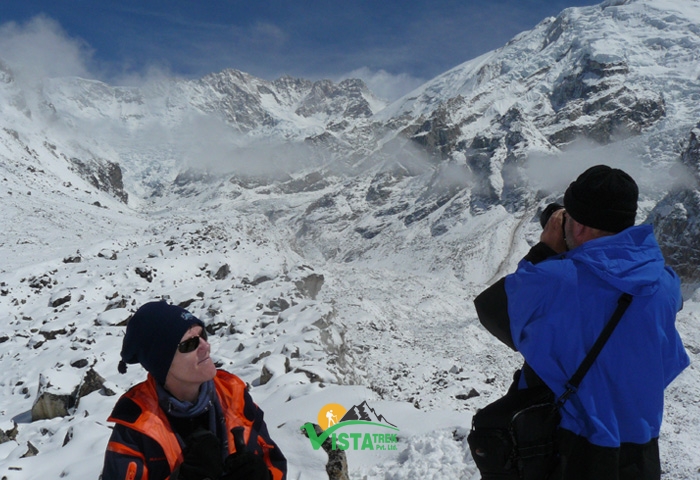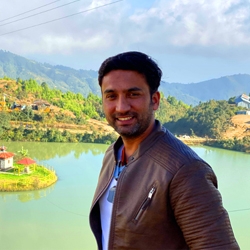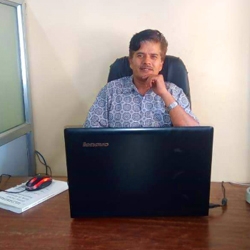Trip Facts
- Duration 27 Days
- Start FromKathmandu
- Group Size1-10 Pax
- End FromKathmandu
- Trip GradeModerate to Strenuous
- Max Height 5140 m
- AccommodationTea House
- TransportationFlight/Bus/Jeep
Best Season
Sept – Nov, March to May
Trip Highlights
- High altitude trek to Kanchenjungha Base Camp (5,140 metres)
- Offers magnificent views of Mt. Kanchenjungha, Mt. Yalungkang and more.
- A Crowd free peaceful adventure to Third highest mountain in the world.
- Passes through a number of local villages observing agricultural life of people
- Home to many wild lives including snow leopard.
Trip Overview
Kanchenjungha Trekking is considered as one of the most amazing trekking which takes you to the top of the third highest mountain in the world. The meaning of the term ‘Kanchenjungha’ is ‘Five Great Treasuries of the Snow”. That said, it really has seven major summits. Mt. Kanchenjungha is the third highest peak of the world which stands at a height of 8,585 meters. It is situated in the North-Eastern part of Nepal straddling the border with Sikkim.
This is an inspirational trek in the pristine Himalayan community including several satellite peaks and glaciers, consisting of five summits. This is the abode of gods who bestow goodwill and prosperity on the summits and their lands. To the climbers of this mountain, however, it can take on a slightly more ominous feeling.
Even before Nepal opened the borders of Mt. Kanchenjungha to foreign visitors in the early 1950s, it was probably the best recognized and well-known mountain since it could be clearly seen from Darjeeling – the tourist center of India.
We begin the journey to Kanchenjungha with a flight from Kathmandu to Taplejung ( Suketar). Then, from Suketar, the trek goes to Chauki through the villages of Mitlung, Ghunsa, Khambachen and Lhonak to Pangpema (5140meters) which is also the Base Camp for expeditions attempting the North Face of Kanchenjungha II and the culmination of the first part of the trek.
The area is home to a variety of endangered species, such as the snow leopard, red panda, musk deer, gray wolf, and the Himalayan black bear. It provides an an excellent opportunity for those who wish to penetrate the hills and villages of eastern Nepal offering unlimited and superb camping sites with its magnificent natural synergy at a close witness.
Trip Itinerary
- Upon arrival at Tribhuwan Intl Airport in Kathmandu, a representative from Vista Trek waiting, well in time, to receive you shall welcome you to this land of towering Himalayas. Once reaching your hotel in a car from the airport, all you need to do is check in and enjoy the refreshment served. We then visit the Vista Trek office for discussion on trekking, introduction to the guide and porter, and settlement of dues if any. Since we will still have some time for a walk around Thamel, you can do so if you please.
- This day is for getting ready; so the day starts with a meeting at Vista Trek office. Although many of the requirement fall under the responsibility of Vista Trek, travelers also share some responsibility, often, regarding travel equipment and gear. In the case of the latter, it is always possible that the condition of the equipment and/or gear required for the expedition may not be as expected. Today, therefore, is also for making such amendments or arrangements.
- The flight to Bhradapur from Kathmandu lasts for about 45 minutes. We fly early morning. Birtamod, a relatively affluent settlement in the eastern plains of Nepal, is roughly half an hour by car from the airport. We stay here for the night.
- The long drive today starts early. The hilly highway passes through Ilam, famous for tea gardens, on its way to our trailhead. The ride stops at least twice for breakfast then lunch.
- After breakfast, we start our day with another adventurous jeep ride . The ride goes along Tamur River as a number of smaller tributaries hurry to enter Tamur River, cardamom finds its place in the shades of moist forests. Going ups and down in bumpy road, finally arrive in Lelep village for overnight.
- The meandering route today crosses some bridges and reaches the deeper areas of a gorge. The narrow path, built on slopes of steep cliffs, demands practicing caution to avoid a possible deadly fall into the raging Ghunsa River. We stop somewhere en route for lunch. The walk, after lunch, is on a trail that swerves steeply all the way to the village of Amjilosa, perched on grassy hillside.
- Uphill out of the village, the walk soon finds descending all the way to the river, before an ascent once again. Walking under the canopy of rhododendrons alongside bamboos is certainly a relief. One more steep climb and the route leads to Gyabla.
- The planks of hemlock and larch have found their places in the relatively new teahouses. We stop for the night in one of them.
- From Gyalba, we walk the path through a meadow and past the alpine Tibetan village of Phole. As the trail gains in altitude, the vegetation changes to pines and junipers. The final descent to the river makes the crossing into Ghunsa Village possible.
- The farms, in the village, are for growing maize, potatoes, and the likes. The fluttering prayer flags and the Gompas hint towards the faith. The wooden homes and stone or wooden fences as well as yaks and sheep for livestock point towards the ways of the villagers. This is where we spend the night.
- An acclimatization day, woven into a high altitude trek, is not for rest. Acclimatization process requires that we go higher and come down for the night. In the morning, therefore, we walk roughly four hours in total for both the up first and the down later. The village of Ghunsa demands the remaining time with its ways and charms.
- After breakfast, it's time for walk again. Through forests filled with rhododendrons and pines, the route goes up a comfortable incline. We stop for lunch by the river. The steep ascent, from here on, lasts until the descent to Khangpachen Village, showcasing Mt Kumbhakarna for the view. We spend the night here.
- Like all other days, our walk today starts after breakfast. The trek soon walks on the northern side of Kanchenjunga Glacier, on high plateau, and past Lhonak Glacier. The trek stops once we reach Lhonak for the night. The walk around, however, often continues for a while with a view to capturing as much of the Vista as possible.
- The walk after breakfast lasts for around three hours and follows a moraine to Pangpema at 5,140 m. Kanchenunga (north) Base Camp is the place for that view of Kanchenjunga Main. It is here most realize that the magnificent views en route were simply leading to this climax.
- This is also a day for the day-walks for closer inspections of things around or a better angle to the possible views. For the former, a climb near the glaciers presents an opportunity to enquire about peaks around Jongsang-La Pass. For the latter, a hike up the ridge to the north serves a vantage point for that view of Kanchenjunga as well as Tent and Wedge Peaks. We spend the night here.
- We retrace our footsteps.
- We retrace our footsteps.
- The route that starts out comfortable, soon, enters a forest and the steep and rocky trail begins. The campsite today is below Sele-La Pass.
- The trail today is both demanding and rewarding. The route involves crossing the high passes, Sele-La (4,480 m) and Sinon-La (4,660 m), before making that final descent to Tseram. It is the views atop the passes that many find comforting and worth despite the long walk.
- After breakfast, we walk this short walk (relatively) to Ramche. Past the snout of Yalung Glacier, the walk ascends and enters valleys, formed by the melting and evaporation of ancient glaciers, on the way. Past clear streams and a frozen lake, the level of excitement in the trek rises as Kokthan (6,147 m), Rathong (6,682 m), and Kabru (7412 m) appear in sight. Ramche, a consequence of an ablation, is where we spend the night.
- Our walk today starts early morning. With packed lunch, we head off towards Oktang in the direction of the vista that awaits. On a long ridge all above 7,500 m high, rest the soaring three (three of the five of Kanchenjunga summits). Crossing the Yaglung Glacier, we perch high on a vantage point. We walk all the way back to Tseram for the night.
- Leaving the Kabru and Rathong mountains behind and past the snout of Yalung Glacier, the route descends. As altitudes lose heights, the trail enters a dense forest and climbs further down; this time on a sharper side. Tortong, amidst blue pines, spruces, firs, and hemlocks, is where we stop for the night.
- Crossing a wooden bridge, the walk today starts out up Simbua Khola Valley. Soon, however, altitudes drop sharply as we traverse on steep downhills. Leaving the Lamite Jungle behind, the trail still twists and turns past verdant meadows and lush forests before finally descending to Yamphudin. The mixed populace of the village greets all travelers. We stop here for the night.
- We leave Yamphudim after breakfast. The trail, along the banks of Kabeli Khola, presents all willing travellers with the opportunity to dip in the clear pools at places. The route, towards these final days of walk, crosses ridges, meanders the slopes of hills, and comes with its trademark alternating ups and downs. We reach Mamankhe for the night.
- This is our final day of the trek. On paths familiar by now, all walk content. The body looks tired; but the flow of energy says it all: smiling faces walking, perhaps for once, in nonchalance.
- On our way back to Taplejung, we have another adventurous jeep ride following some small villages, jungle as well as Suketar airport.
- The long drive today receives its compensation as the road passes through the tea gardens. We have our breakfast and lunch on the highway. Birtamod, an affluent settlement in eastern parts of Nepal, is where we stop for the night.
- A morning flight from Bhadrapur airport leaves all in Kathmandu. We then go to our hotels for the day. Evening is for the farewell dinner together. Please allow Vista Trek the honour.
- Day 26 Reserve day
- This is reserve day in case of bad health or bad weather during the trek. If everything goes smoothly, you can enjoy your day freely in Kathmandu.
- Enjoy your final day in Kathmandu, buying souvenirs and gifts to your family, friends and relatives. In the evening, farewell dinner at typical Nepali restaurants with all the staffs that supported to your trek to Kanchenjungha.
- If you have a morning flight, we leave for Tribhuwan Intl Airport early morning on a car arranged by the office. If your flight is in the late afternoon or evening, only your WILL shall dictate your involvement or indulgence as you may please before leaving for Tribhuwan Intl Airport in the vehicle.
Cost Includes
- Pick up and transfer by car from Airport-Hotel-Airport.
- 4 nights standard hotel accommodation.
- Breakfast, lunch and dinner during the trek.
- Local lodges accommodation during the trek.
- Government licensed guide, plus experience porter ( including their food, salary, accommodation, equipment, medicine & insurance).
- Both way flight from Kathmandu-Birtamod – Kathmandu
- All necessary permits and entry fees including Kanchenjungha Trekking permit.
- Medical kit box.
- Rescue assistance.
- All government taxes.
- Necessary equipment (sleeping bags, down jackets etc. if needed).
- Our service charge.
Cost Excludes
- Meals in Kathmandu.
- International airfare.
- Nepal entry visa fee ($40).
- Your travel insurance (should include your medical and rescue).
- Any personal expenses.
- Any kind of hot and cold drinks
- Staff & driver tipping.
Useful Info
About Accommodation.
In Kathmandu, we will accommodate you at Hotel Sapana Garden, while local lodges accommodation provided during the trek on twin sharing basis. Hotel in Kathmandu comes with private bathroom , however in mountain, toilet and shower will be on sharing basis. In the busy months, (October/November & April/ May) you may have to share the room with other traveler as some villages have limited number of local lodges .
About Meal
You can enjoy typical Nepali food as well as continental , Italian, Indian and Tibetan. Dinner and breakfast serve at the tea house where we stay and lunch will be served on the way to next destination. In Kathmandu only breakfast is provided. If you are a vegetarian or vegan, no worries, Nepal is such a easy place to get several vegetarian options.
About Staff:
A Guide and a porter assist you from Kathmandu to Kathmandu. In a group with more than 8 clients, 2 guide will be provided. A porter provided for 2 trekkers, and carries between 15 to 20 K.G.
About Equipments
Following Equipment list is recommended to bring for the trek.
Down Sleeping Bag, Down Jacket, Long sleeved shirt, Jumper or fleecy jacket, T – shirts, Trekking shoes or boots, Comfy shoes for around the camp, thick and warm woolen socks, Light cotton socks , A day bag to carry your valuable, Sun hat, Woolen hat, Gloves, rain coat, Sun block, lip balm , Goggles or sunglasses, Long underwear, Thermal wear, Nylon windbreaker, Nylon wind pants, Water bottle, Sewing kit, Medical & first aid kit, Flash light, Batteries and bulbs, Swiss army knife, Towel and toiletries etc.
Physical Fitness and experience
Kanchenjunga Trek is a moderate which is fit for those who has the ability to walk 5-6 hours ups and down in a day carrying own day bag. Some days are even longer with 7- 8 hours of walking. Annapurna Base Camp is high altitude trek which demands more physical fitness,however if you are strongly determined and have excellent health and average physical fitness can complete this trek. Few weeks prior to the trip, doing some physical exercise is better . No technical skill is needed however past experience also helps . If you are taking medicine for heart, lung or for blood diseases, please kindly consult your doctor and inform to Vista Trek P. Ltd.
About Insurance,
You have to obtain the travel insurance which should cover emergency evacuation and medical expenses. Some Insurance policy’s cover only up to 4000 meter, so please kindly confirm with the insurance company before you purchase it.
About Seasons
Spring (March to May) and Autumn (September to November) are the best months for Kanchenjunga Trek. You can do it in winter (December to February )if you are used to with extreme cold temperature.
About Bus Drive
Highway in Nepal are safe, however sometime transport can be halted due to landslide , strike or by political issues. In such case trip itinerary will be affected. Thus, we would like to request you to add few days extra in Kathmandu. If you complete your trip smoothly, then you can enjoy your time with other activities like sightseeing, White water rafting. Jungle activities or more.


 +977 9841322985
+977 9841322985 
